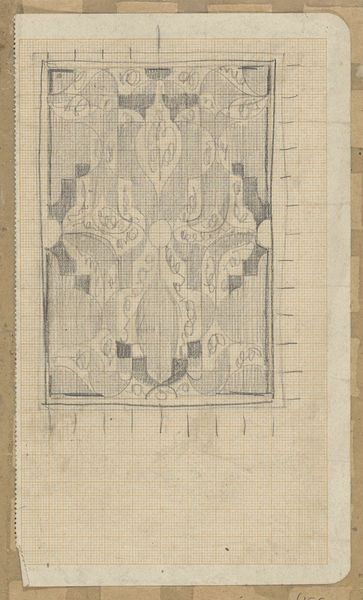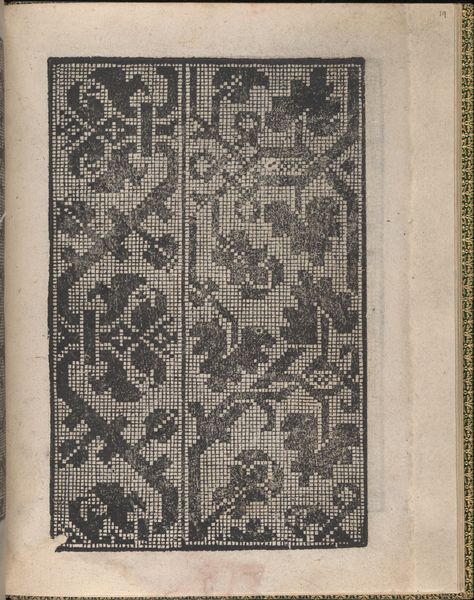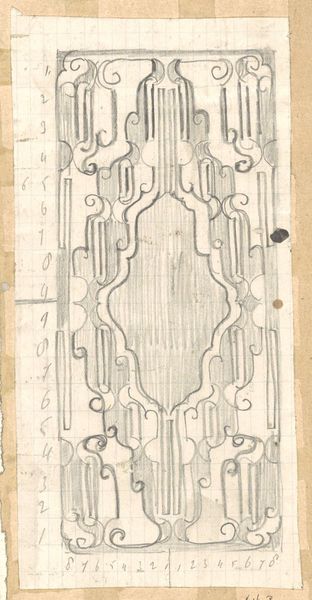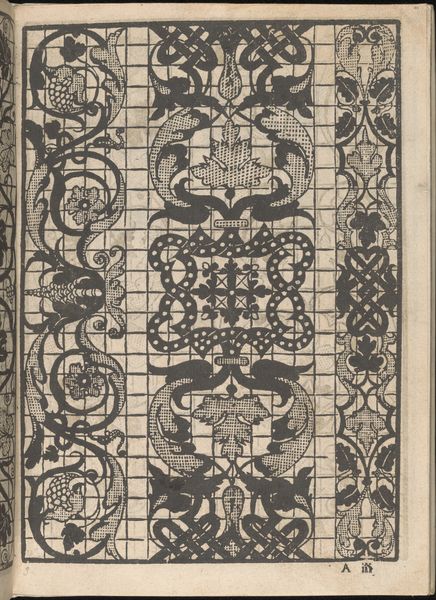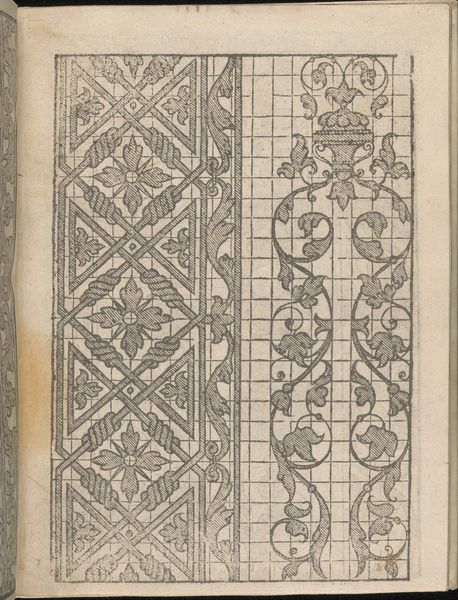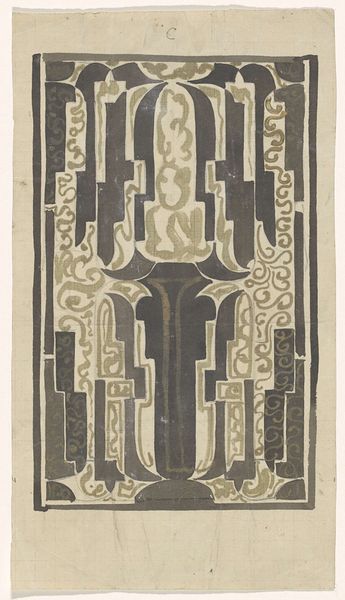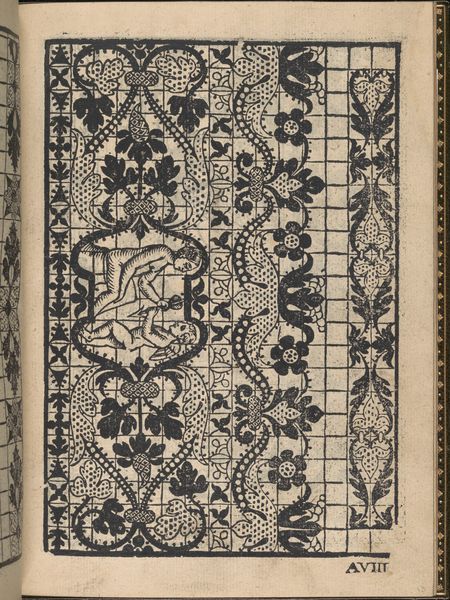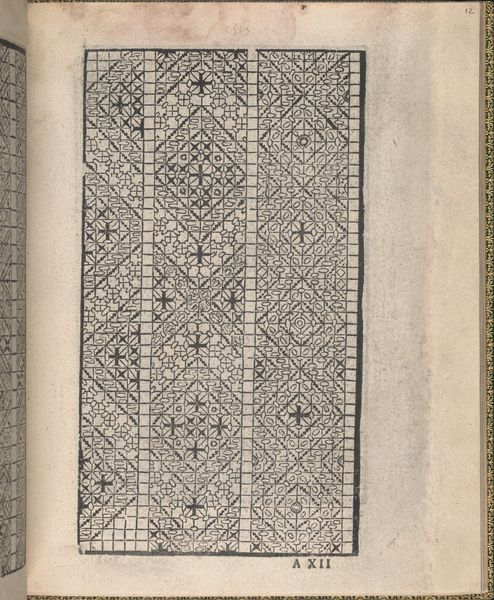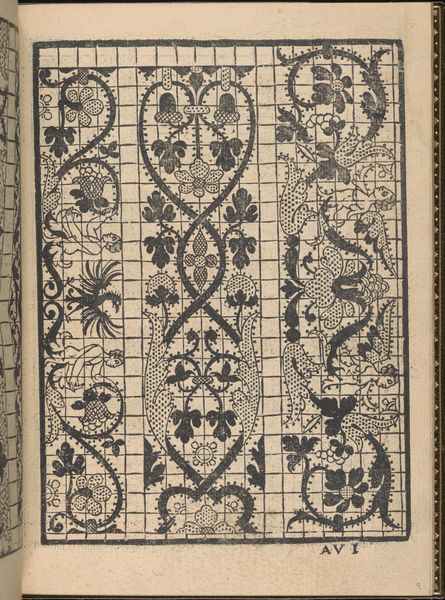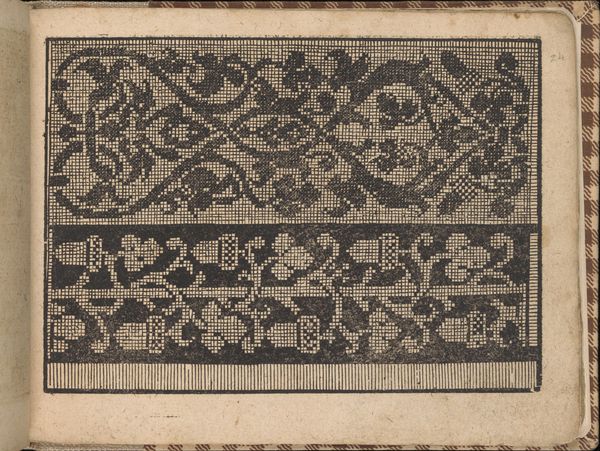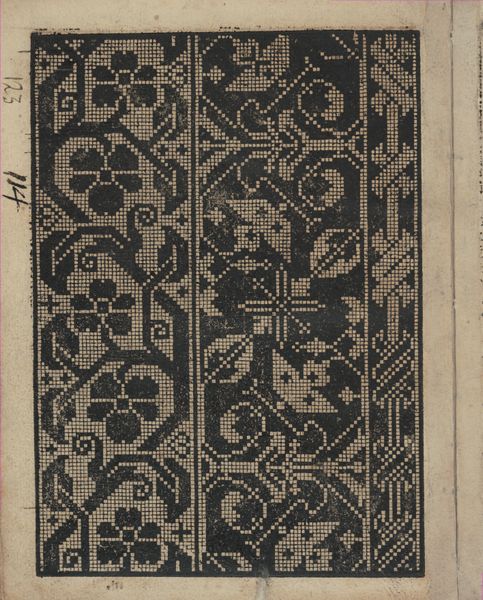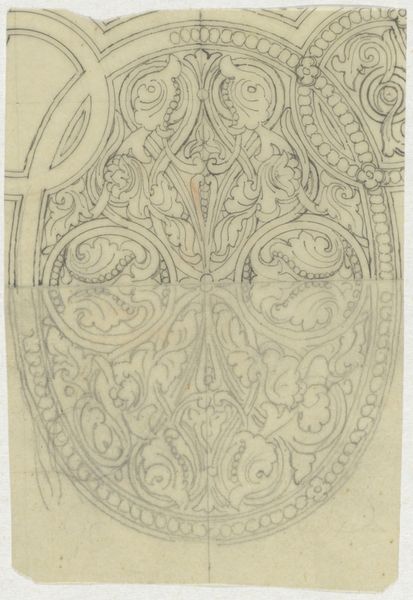
drawing, paper, ink
#
drawing
#
aged paper
#
toned paper
#
art-nouveau
#
old engraving style
#
sketch book
#
paper
#
personal sketchbook
#
ink
#
geometric
#
ink colored
#
pen and pencil
#
pen work
#
sketchbook drawing
#
sketchbook art
Dimensions: height 170 mm, width 120 mm
Copyright: Rijks Museum: Open Domain
Curator: Looking at this interesting piece by Carel Adolph Lion Cachet, created sometime between 1874 and 1945, titled "Decoratief ontwerp" or "Decorative Design", the immediate sensation is of peering into an aged archive. The drawing, crafted with ink on paper, really evokes a sense of time gone by. Editor: My first impression is how the stark monochrome emphasizes form and structure. The grid underneath creates this interplay between controlled geometry and more organic, flowing shapes layered on top, giving it a feeling that teeters between rigid and free-flowing. Curator: Indeed, and that underlying grid might tell us a lot about its function; the drawing bears the hallmark of the Art Nouveau style, with its sinuous lines, whiplash curves and, more importantly, this pursuit of merging fine and decorative arts into one continuous aesthetic experience. Editor: Precisely. The eye moves between the rigid grid and the rounded forms; I almost get the sense of early blueprint, a foundational structure given decorative embellishment. Do you read the visual language here suggesting at what might this artwork function decoratively? Curator: Knowing Cachet's broader interest in cultural emblems of the Dutch East Indies, the symmetry and almost totemic construction suggest an attempt to create a new symbolic system, maybe for textiles, blending the European decorative style with Asian motifs for cultural consumption. It reflects a period when designers actively sought to build symbolic languages around colonialism and trade. Editor: And perhaps a subtle critique embedded in that gesture too? It certainly creates a dialogue. Considering Cachet’s dates and style, could he be pulling on something that relates back to pre-colonial craft traditions, responding to anxieties born from industrial mass production? Curator: I like the point; the artist may be re-asserting those ancient identities using art as an agency in cultural memory, giving new meanings that bridge past and future. This piece gives food for thought about Art Nouveau as more than surface embellishment, doesn't it? Editor: Absolutely. Its complex relationship to modernism, tradition, craft, and even resistance emerges from this simple but highly evocative composition.
Comments
No comments
Be the first to comment and join the conversation on the ultimate creative platform.
